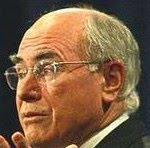FCC Worries Poor Using Electronics Too Much
"As access to devices has spread, children in poorer families are spending considerably more time than children from more well-off families using their television and gadgets to watch shows and videos, play games and connect on social networking sites."
 F.C.C. officials and other policy makers say they still want to get computing devices into the hands of every American. That gaps remains wide — according to the commission, about 65 percent of all Americans have broadband access at home, but that figure is 40 percent in households with less than $20,000 in annual income. Half of all Hispanics and 41 percent of African-American homes lack broadband.
F.C.C. officials and other policy makers say they still want to get computing devices into the hands of every American. That gaps remains wide — according to the commission, about 65 percent of all Americans have broadband access at home, but that figure is 40 percent in households with less than $20,000 in annual income. Half of all Hispanics and 41 percent of African-American homes lack broadband. The new divide is such a cause of concern for the Federal Communications Commission that it is considering a proposal to spend $200 million to create a digital literacy corps. This group of hundreds, even thousands, of trainers would fan out to schools and libraries to teach productive uses of computers for parents, students and job seekers.
Separately, the commission will help send digital literacy trainers this fall to organizations like the Boys and Girls Club, the League of United Latin American Citizens, and the National Association for the Advancement of Colored People. Some of the financial support for this program, part of a broader initiative called Connect2Compete, comes from private companies like Best Buy and Microsoft.
These efforts complement a handful of private and state projects aimed at paying for digital trainers to teach everything from basic keyboard use and word processing to how to apply for jobs online or use filters to block children from seeing online pornography.
"Digital literacy is so important," said Julius Genachowski, chairman of the commission, adding that bridging the digital divide now also means "giving parents and students the tools and know-how to use technology for education and job-skills training.
In his 2000 State of the Union address, President Bill Clinton announced"a national crusade" to "close the digital divide between those who've got the tools and those who don't." Now the Obama administration is launching a national crusade to close the digital divide between those who know how to use those tools properly—for good, pro-social, educational purposes—and those who erroneously use them for mindless entertainment that boosts neither grades nor productivity. (Reason, 5/30/2012)














